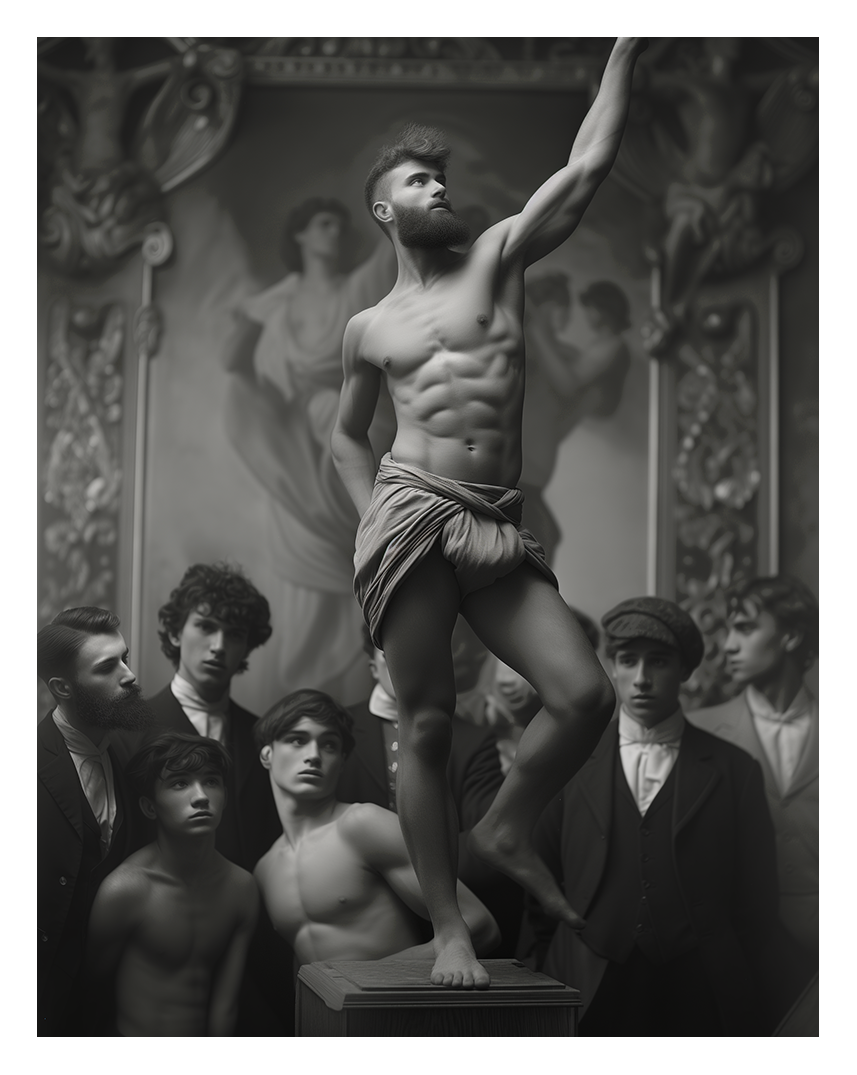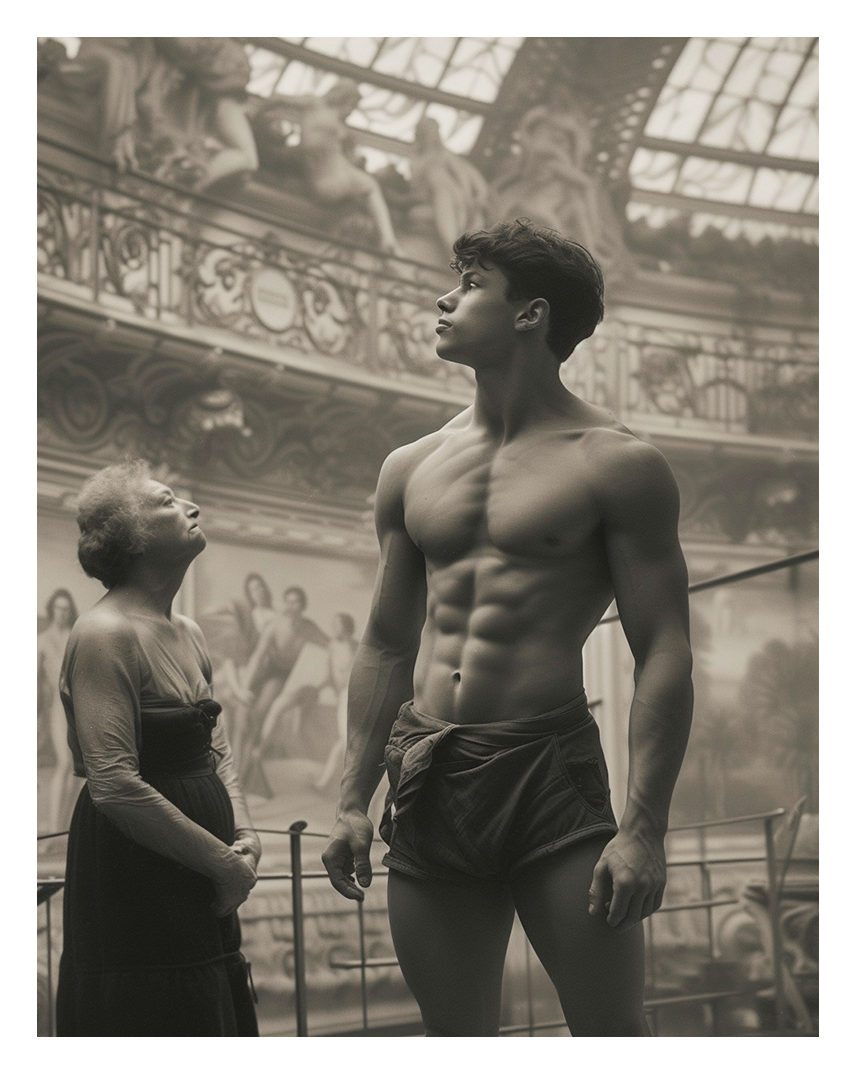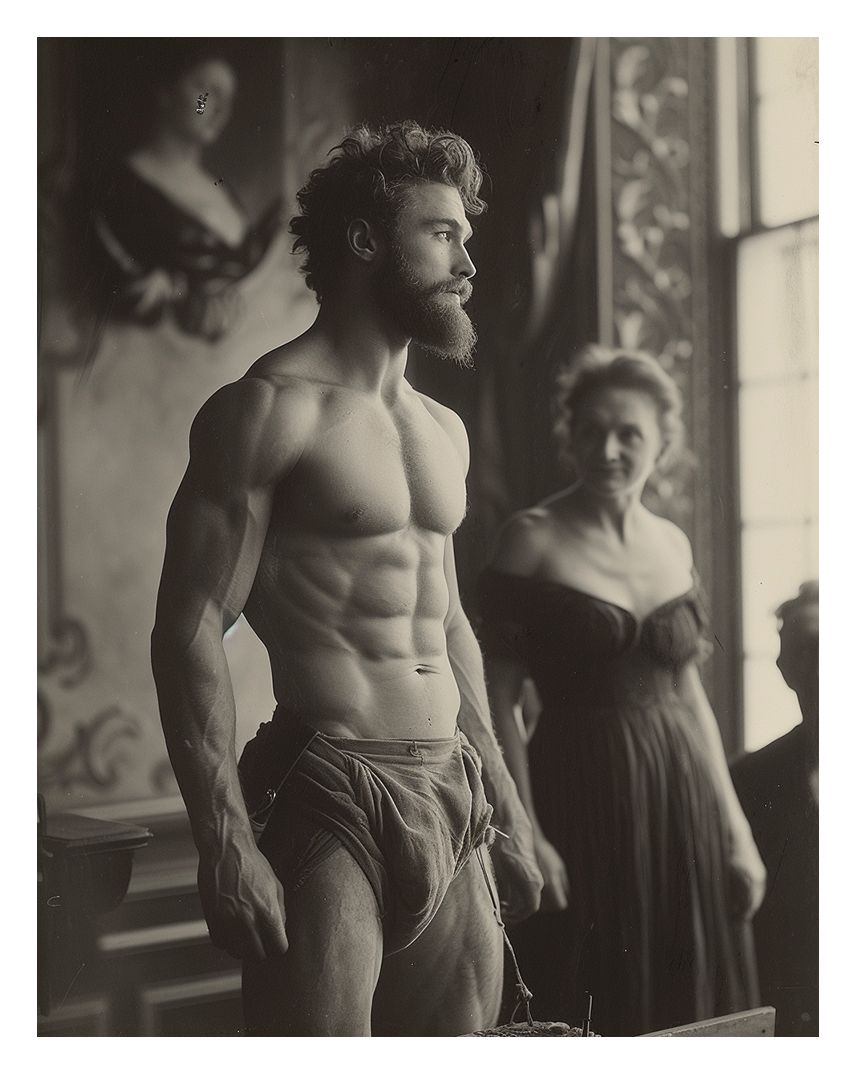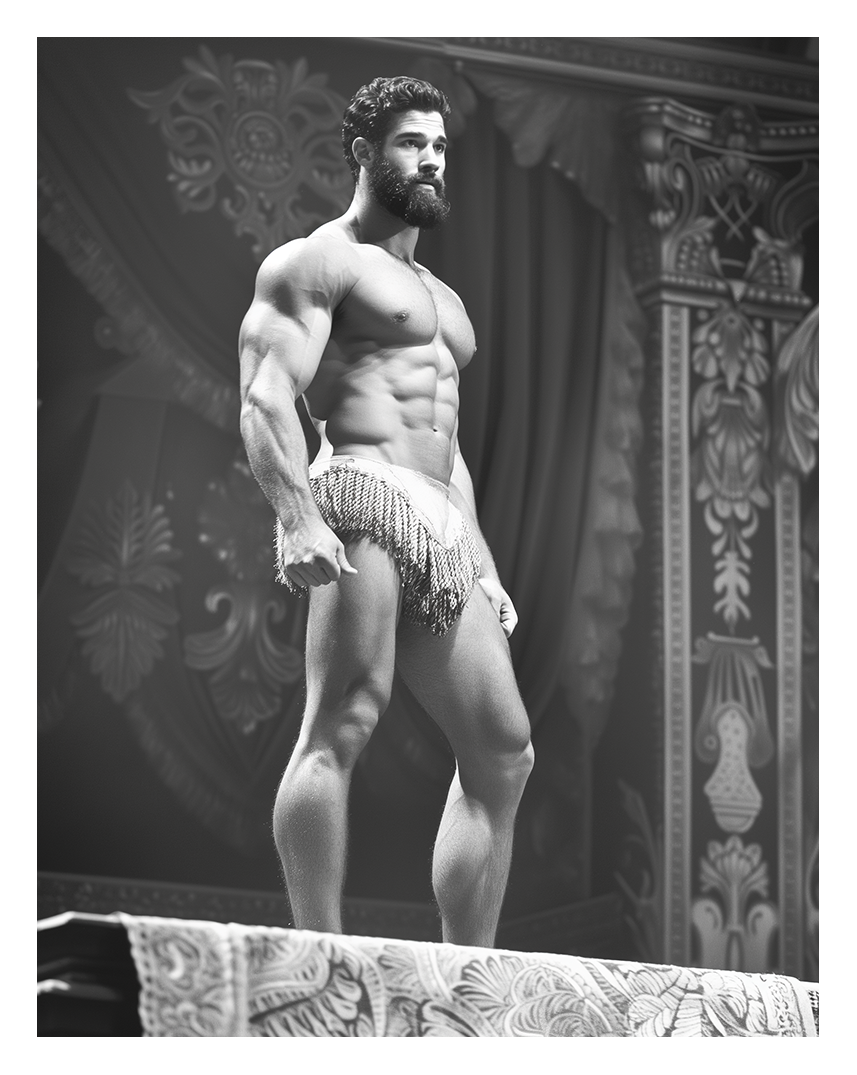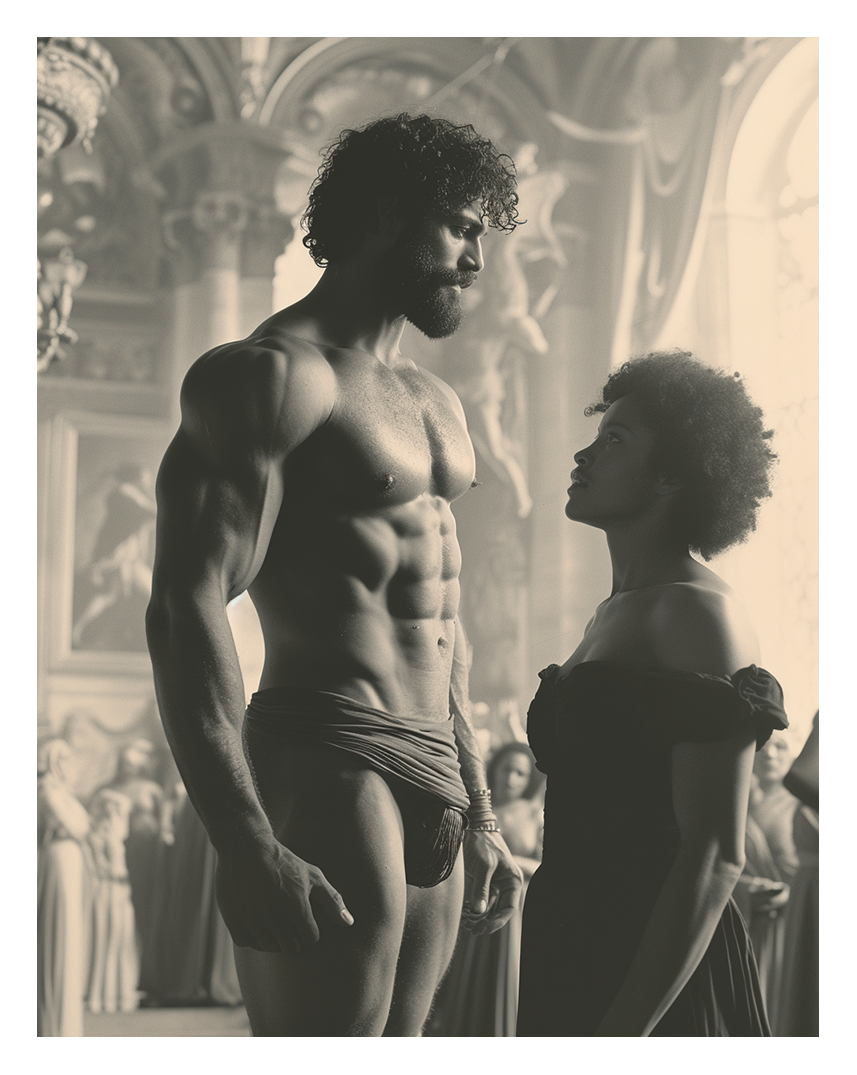Morning Visits — Collector Catalogue
Ritual, Restraint, and the Theatre of the Gaze
Set in an imagined 19th-century Paris, Morning Visits draws inspiration from a discreet cultural custom: a short-lived tradition in which young male athletes — often students of the city’s elite gymnasiums — were invited to pose as living statuary in museum salons during private hours. Reserved exclusively for select female patrons of means, these encounters blurred the lines between study, spectacle, and seduction.
This collection reimagines that fragile ritual through a contemporary lens — where each portrait functions as both homage and inversion. The men are offered not as passive figures of desire, but as agents within the gaze itself: composed, sculptural, and fully aware of their role as both object and witness. Loosely draped in cloth, bathed in soft light, and posed with monastic restraint, they evoke the aesthetics of classical antiquity while complicating its hierarchies of power and beauty.
There is a deliberate tension here — between devotion and discipline, eroticism and elevation. The men are seen, but not consumed; present, yet elusive. We, the viewers, inherit the gaze of the original salon patrons, becoming complicit in a ritual that is both intimate and performative. In doing so, Morning Visits subtly subverts the historical norms of the male gaze, reorienting our attention not just on what is seen, but how we see — and what that act reveals about longing, control, and vulnerability.
Each image is available exclusively as a limited edition print, produced to museum standards and accompanied by a signed certificate of authenticity. As with the ritual that inspired it, once the visit ends, it cannot be repeated.


